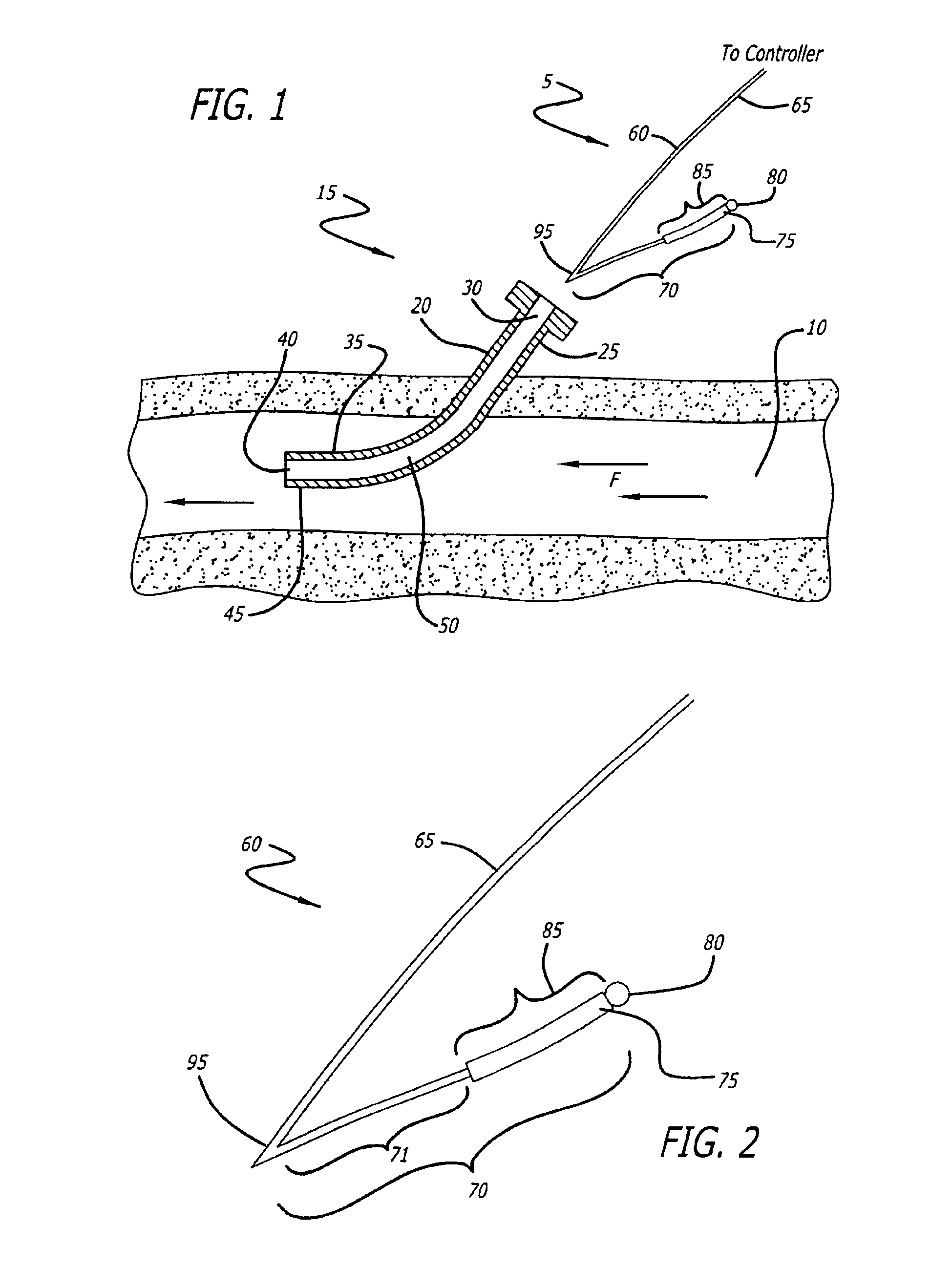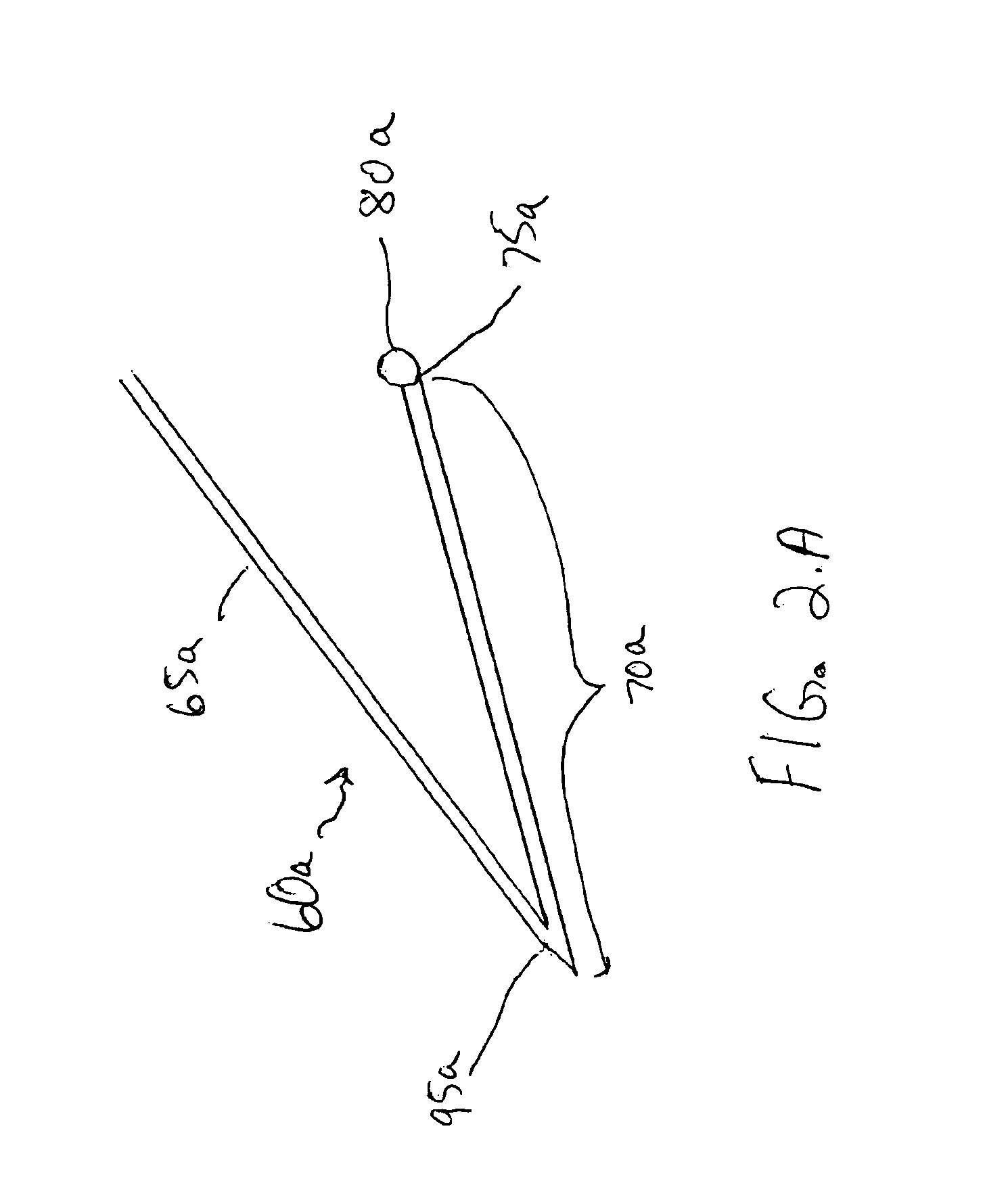For various reasons, however, a person may unintentionally develop a body temperature that is below normal, a condition known as
hypothermia.
Accidental hypothermia is generally a dangerous condition that may have serious medical consequences and may result from various conditions such as extreme
exposure, injury, illness or
anesthesia.
However, if the hypothermia is severe, and especially if the patient is undergoing
surgery, such methods may be too slow, impractical and ineffective.
One cannot wrap patients undergoing
surgery in a
warming blanket or immerse them in
warm water, or ask severely hypothermic patients that may be unconscious, to swallow enough warm liquid to restore normothermia.
Furthermore, where external control over body temperature is desired because the physician desires to induce and maintain hypothermia, these methods are generally not powerful enough to defeat the patient's thermoregulatory responses.
Even if the body's thermoregulatory responses are disabled by, for example,
disease or
anesthesia,
surface cooling or warming methods are generally not powerful enough to provide control that can keep a patient at a particular temperature.
If the patient begins to get too cold or to warm above the target temperature, the
surface cooling and warming methods generally cannot react fast enough and with sufficient precision to maintain the target temperature.
This method may be effective but is limited in the amount of heat that can be administered without injuring the lungs.
This by-pass method is both fast and effective in adding or removing heat from a patient's blood, but has the
disadvantage of involving a very invasive
medical procedure which requires the use of complex equipment, a team of
highly skilled operators, and is generally only available in a surgical setting, usually where the patient has his or her chest opened by a thorachotomy.
It also involves mechanical pumping of blood and channeling the blood through various machines and external lines, all of which are generally very destructive of the blood tissue.
Because of this, most surgeons avoid placing a patient on by-pass for greater than 4 hours, and if control of the patient's temperature is desired for longer than that time, this method is unavailable.
However, when used to provide a temperature
signal for ETM, each of these probes suffers from significant shortcomings.
Some probes may not give an accurate temperature of the
target tissue.
For example, lowering the heart temperature to 32° C. may be very beneficial for a heart
attack victim, but lowering the temperature to 28° C. might lead to dangerous arrhythmias.
A rectal temperature probe is generally very slow to respond to temperature changes in the body's
core temperature, and thus if the
target tissue is the heart, and the core temperature is being lowered quickly, a controller receiving its temperature
signal from a rectal probe might not receive a
temperature measurement that represents the current cardiac temperature and thus might continue cooling even after the cardiac tissue has reached a target temperature and the patient's actual cardiac temperature might dangerously overshoot the target temperature of 32° C. and drop the cardiac temperature below 28° C. In similar manner, probes placed in the bladder also tend to
lag core body temperature when that temperature is being changed, i.e., when the patient is being cooled or warmed.
Some probes are awkward and too difficult to use.
For example, tympanic probes are difficult to place and tend to fall out of the ear during use.
Bladder probes are difficult and awkward to place and generally require a slow but constant flow of uring to function accurately.
Rectal probes are inconvenient to use, especially where a sterile surgical field is required.
A needle probed placed through a hypodermic
syringe into the target tissue may be more accurate and precise but would require injecting the probe directly into the patient and may also require radioscopic or fluoroscopic confirmation of placement, procedures that are not always readily available.
Such a procedure would also entail a risk to the patient and the discomfort of a needle stick into the target tissue which might be deep within the body.
Where a temperature probe is controlling an ETM procedure and thus is in or on a patient at the same time as an ETM heat exchange
catheter, the probe may be unacceptably influenced by the temperature of the
catheter and not accurately reflect the temperature of the target tissue, especially if the probe is located too close to the heat exchange
catheter.
For example, if the ETM catheter is located in the left
femoral vein, and the probe is placed in the
right femoral vein, it would require a separate stick, that is, a puncture of the vessel, for the probe and would make it difficult for an interventionalist to perform
angioplasty from either the right or the left
femoral artery.
Such a probe would not require a second stick to place it into the bloodstream; however, in this configuration the temperature probe would measure the temperature of the blood soon after it passed over the heat exchange surface and thus might not be an accurate measurement of the temperature of a target tissue or organ or a patient's core.
In some cases, If the temperature probe is advanced far enough beyond the catheter tip to obtain an accurate measure, it may need to be positioned in or near the heart which could have serious health repercussions.
Such a positioning of the probe would also generally require the use of
fluoroscopy or x-
ray, procedures which are not always available or desirable.
 Login to View More
Login to View More  Login to View More
Login to View More 


